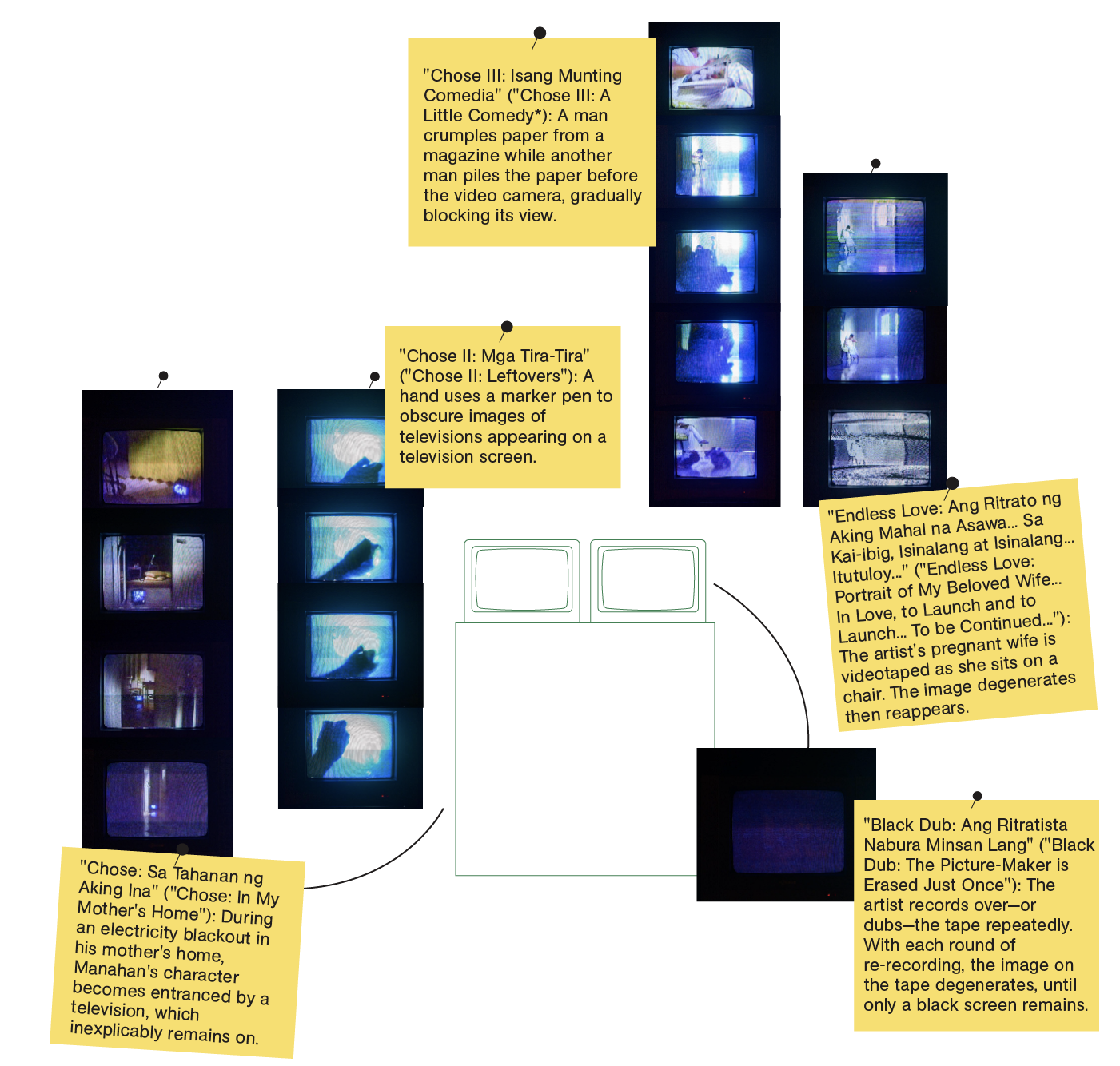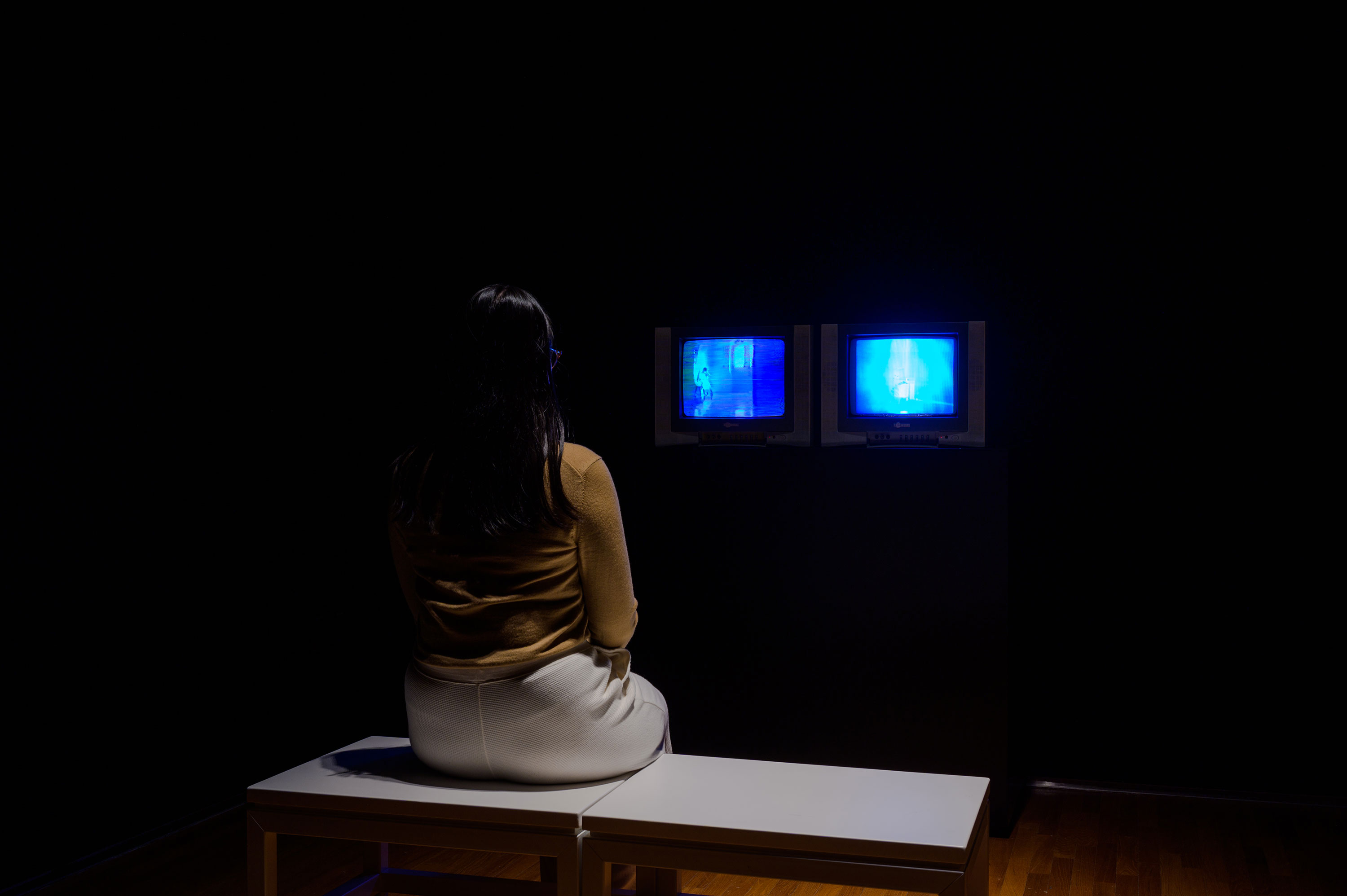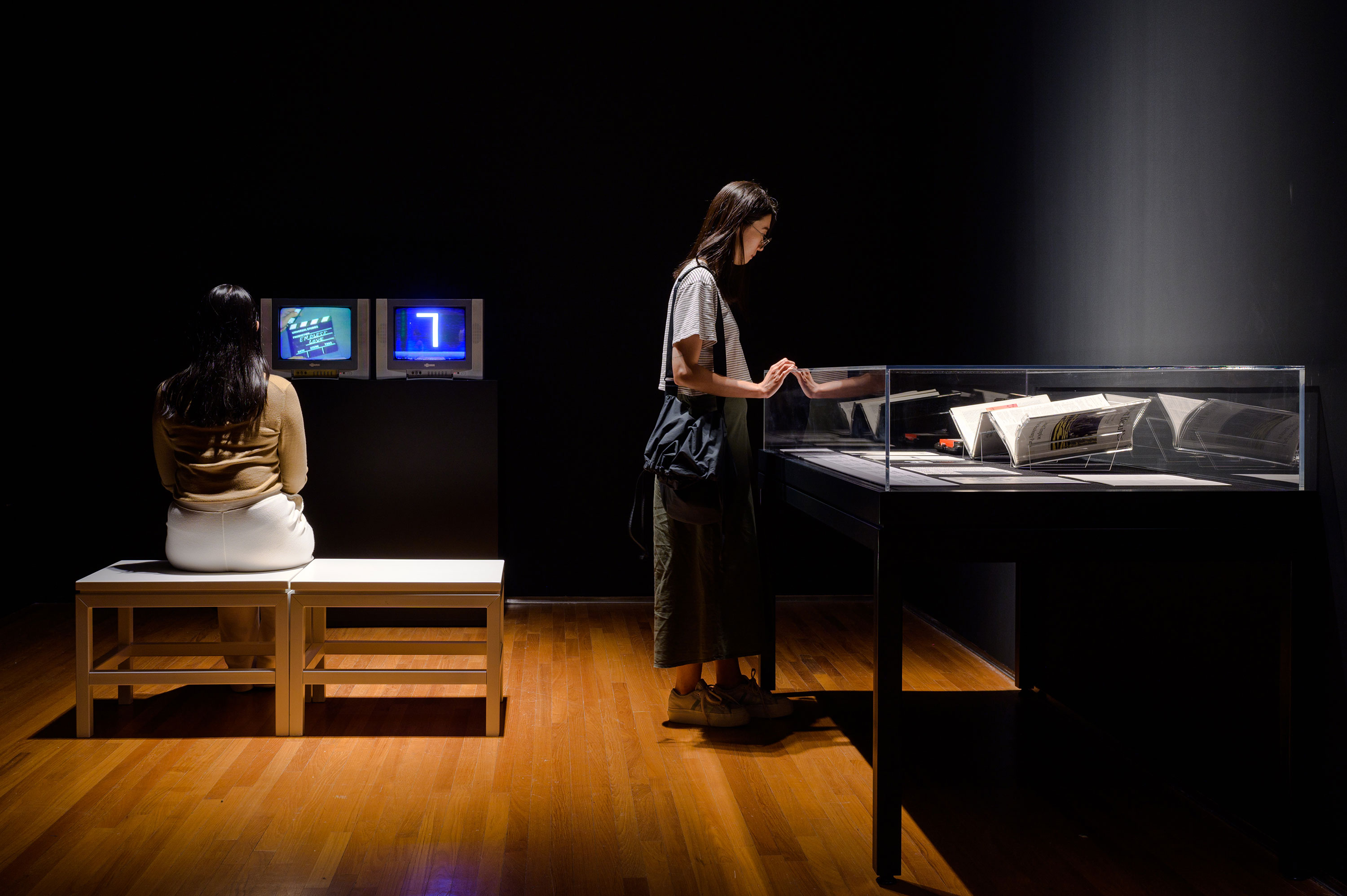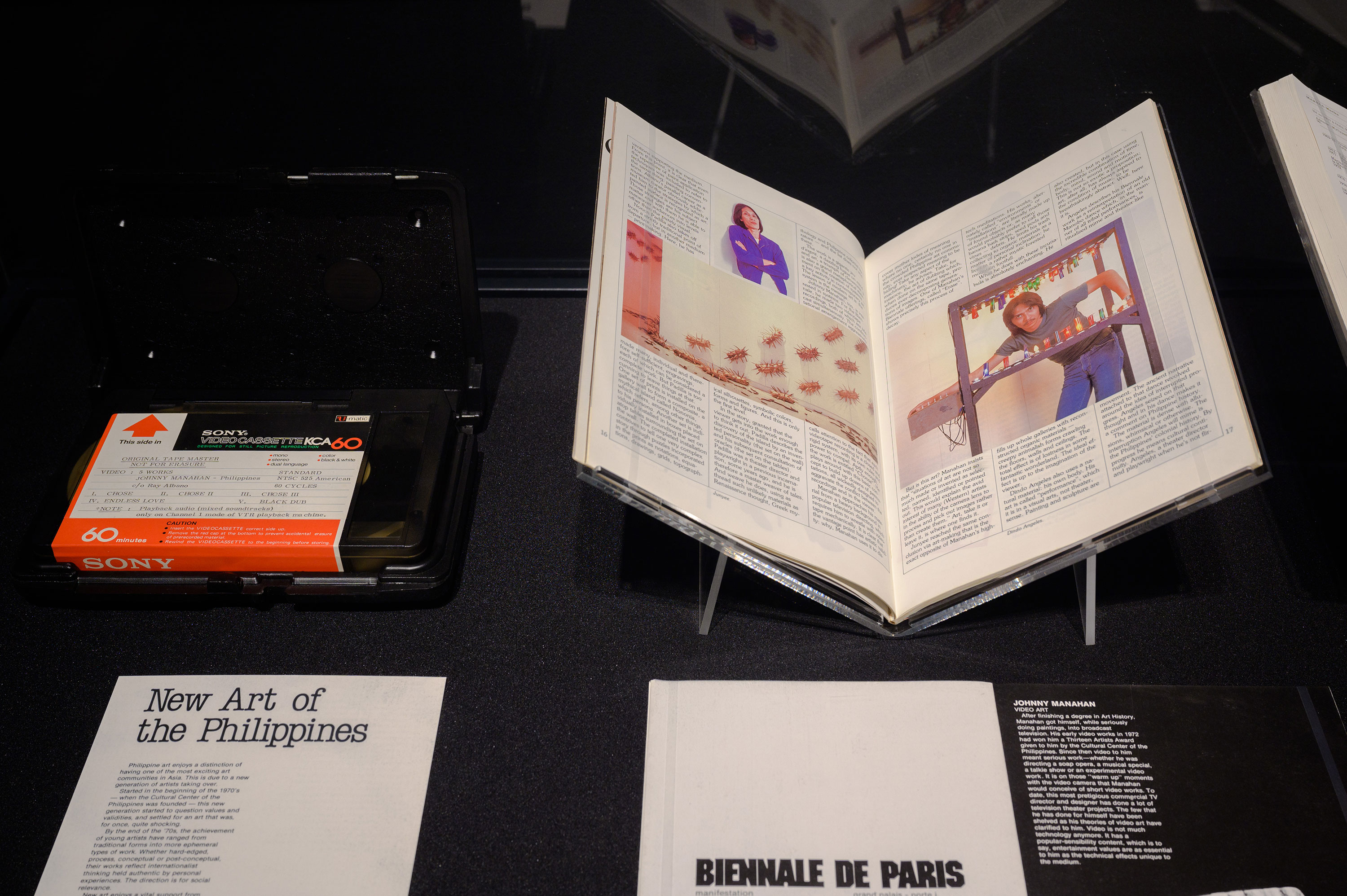
Choose may be the earliest extant video artwork in Southeast Asia. It was first
exhibited in
the 1982 Paris Biennale alongside works by four other Filipino artists representing the “new
art of the Philippines.”
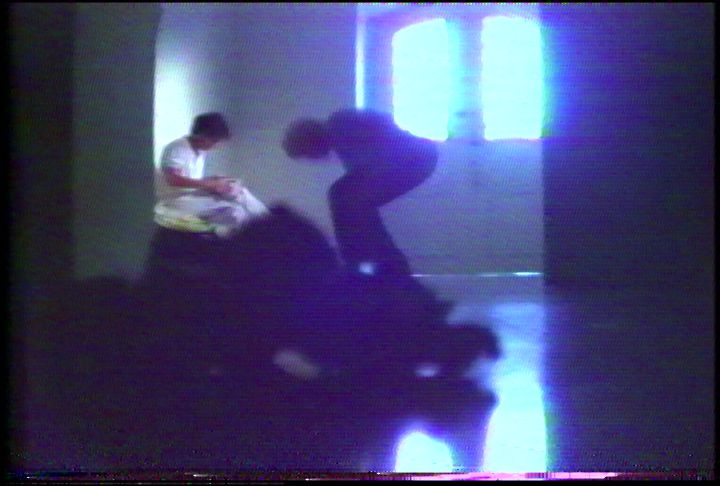
Johnny Manahan. Still from
Choose. 1982. Ⓒ Johnny Manahan
About the Artwork
Choose
1982, digitised 2015
Two cathode-ray tube televisions, video
Video: U-matic colour video transferred to digital video, two channels, each 4:3 aspect ratio, colour and sound (stereo), 27 min 41 sec, played at different timings
Gift of the Manahan family
Collection of National Gallery Singapore
2017-00589
Created by Johnny Manahan over a decade after he became a visual artist and television
director, it is his last video artwork and perhaps the one which best reflects his
specialised knowledge of the medium from his work in the entertainment industry.
Although the television is a medium of mass entertainment, Manahan argues that it is
simultaneously an intimate object whose content can be consumed privately. The choice that
the television affords—in where, when and how a viewer can watch its content and what
content they wish to consume—gives it a magnetic, even magical, appeal.
This freedom of choice is echoed in the set-up of the installation. Faced with two monitors
arranged side by side, showing the same video at different timings, viewers may choose which
monitor and video segments to focus on. The video comprises five short video segments, each
ranging between 1 to 11 minutes in length. Notably, Choose is the first video work in
the
region with documented multi-channel intent and the first to challenge the viewers'
capacity
to give proper attention to multiple screens.
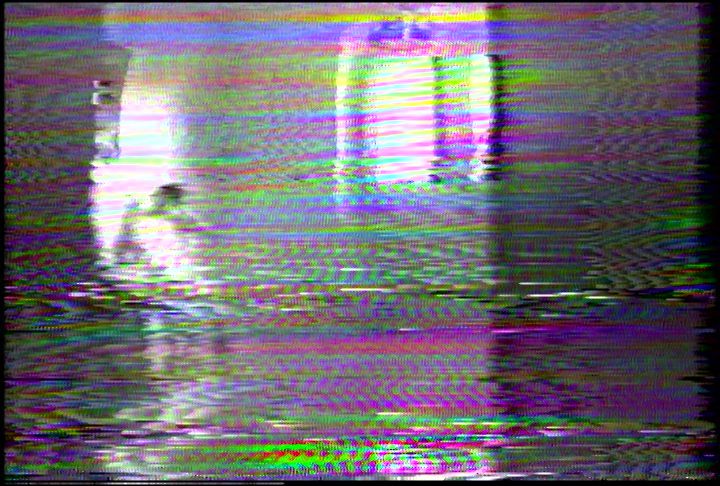
Johnny Manahan. Still from Choose. 1982. Ⓒ Johnny Manahan
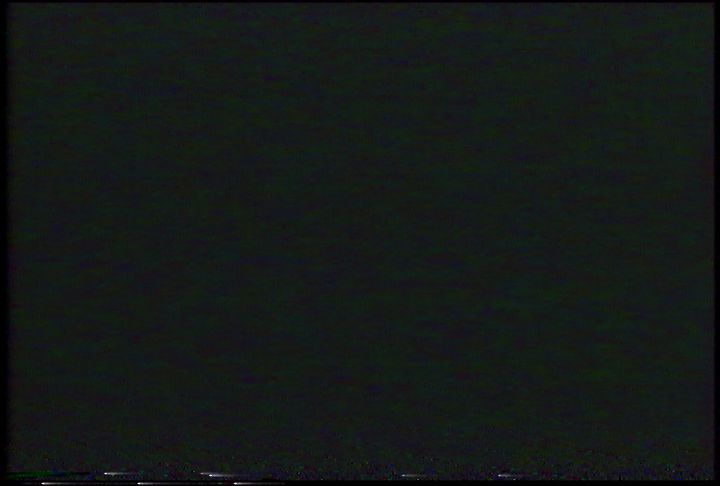
Johnny Manahan. Still from Choose. 1982. Ⓒ Johnny Manahan
Manahan expresses the happiness that viewers derive from television, which has become, for many, an indispensable and joyful part of everyday life, in the first segment titled “Chose: Sa Tahanan ng Aking Ina” (“Chose: In My Mother’s Home”). During a sudden blackout, a small portable television curiously remains on and continues to broadcast. The artist then dances with it in the dark, bringing it from room to room in his mother’s home. It becomes a body that he engages with in a personal setting and, later, he is literally illuminated by its glow. Manahan notes through the narrator’s voiceover that he thinks televisions are like cockroaches in that they will inherit the earth. Like the ubiquitous insect, their appeal and adaptability make them an enduring object.
The tenacity of television content also manifests in the next segment, "Chose II: Mga
Tira-Tira"
(“Chose II: Leftovers”), in which Manahan undertakes the futile endeavour of using a marker
pen
to obscure images of a television appearing on a television. The television featured in the
video is constantly being moved away by another man and away from the ink applied by Manahan
on
the surface of the screen.
The man’s gestures could be considered an analogy for the media persistently evading
censorship
and maintaining its presence.
In the third segment, "Chose III: Isang Munting Comedia"
("Chose
III: A Little Comedy"), a man crumples paper from a magazine while another man piles the
paper
before the video camera, gradually blocking its view. With this scene, Manahan suggests how
the
emergence of video has rendered older media, like print, obsolete.
Faced with two monitors arranged side by side, showing the same video at different timings, viewers may choose which monitor and video segments to focus on.
Manahan experiments with technical effects in the final two segments. In “Endless Love: Ang Ritrato ng Aking Mahal na Asawa… Sa Kai-ibig, Isinalang at Isinalang… Itutuloy…” (“Endless Love: Portrait of my Beloved Wife… In Love, to Launch and to Launch… To be Continued…”), the artist continuously recalibrates a recording of his pregnant wife. Over time, the video’s raster lines—horizontal strips that comprise video graphics—become increasingly evident and its colours fade. The final segment, “Black Dub: Ang Ritratista Nabura Minsan Lang” (“Black Dub: The Picture-Maker is Erased Just Once”), further tests the material limits of the U-matic tape. Video tapes can be reused by recording over—or dubbing—the existing video. The artist dubbed and redubbed the tape until the underlying image degenerated. Eventually, only a black screen with occasional white and coloured glitches remained.
The video in the version of Choose presented in this exhibition has been cut to
the
precise
length the artist intended in 1982, as reflected in a document he provided to the Paris
Biennale, and includes English subtitles. The original version had no subtitles for its
voiceover narration, which suggests that Choose could be understood even without
comprehending the commentary. The translation allows a broader audience to understand
the
work more deeply.
In 2016, Choose was exhibited at National Gallery Singapore with two televisions
side
by
side with only one television playing the video. This reflected the discrepancy between
Manahan’s documented intent to use two television monitors despite sending only one tape
to
the Paris Biennale. The 2023 version of Choose was revised in consultation with the artist to have two television monitors playing the same video at different timings, reflecting the artist's original intent for the work.
About the Artist
Johnny Manahan (b. 1947, Philippines) became a visual artist and a television director in the early 1970s in the Philippines after graduating with a degree in art history from the University of California Berkeley. He can be credited as the first Filipino artist to engage with video as a medium. His first video work was exhibited at the Cultural Center of the Philippines in 1972. Besides the moving image, Manahan has worked with a variety of media, from abstract paintings to sculptures using ready-made objects.
 Image courtesy of Johnny Manahan.
Image courtesy of Johnny Manahan.Installation View
Discover More Details
Manahan’s Choose has five videos segments. Each of them demonstrate specific video manipulation techniques or reflect the artist’s thoughts on the impact of television on society.
